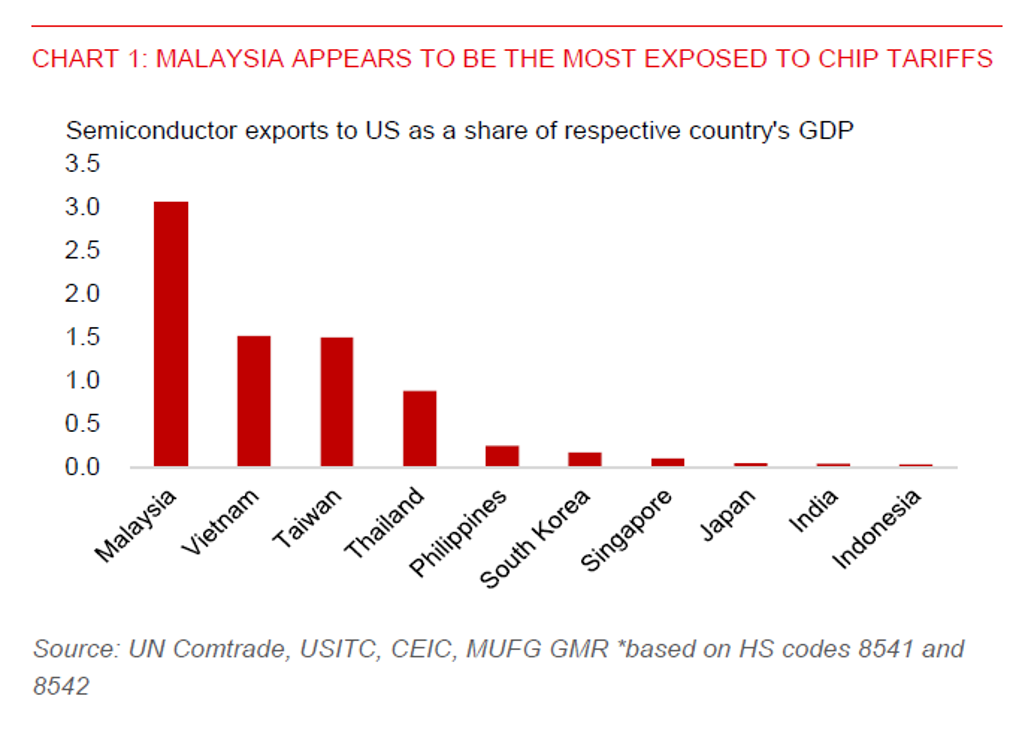Ahead Today
G3: Fed’s Musalem speech
Asia: Thailand foreign reserves, Taiwan exports
Market Highlights
President Trump’s reciprocal tariffs have taken effect. Meanwhile, Trump has further threatened to impose 100% tariffs on semiconductor imports. However, these chip tariffs would not apply to companies that have already committed to manufacturing chips in the US or are in the process of doing so. It’s unlikely that Trump will go ahead with steep tariff on chips. This could be more likely a tactical move to incentivize foreign chipmakers to invest in the US. We believe the actual tariff rate on chips, if any, will be much lower.
Notably, the US sources most of its semiconductor imports from Asian economies, with Malaysia, Taiwan, Vietnam, and Thailand accounting for nearly 60% of total chip imports. Among the major exporters, Malaysia stands out as being the most exposed, given its larger share of US semiconductor imports and the sector’s contribution to its economy - estimated at around 3% of its GDP, the highest in the region. However, exemptions are expected for companies with US manufacturing commitments. Taiwan’s TSMC, the world’s largest contract chipmaker, is reportedly exempted due to its ongoing investments in US fabs. Samsung and SK Hynix from South Korea are also expected to be excluded, according to Korea’s trade minister.
Meanwhile, Fed Governor Christopher Waller has reportedly emerged as a leading candidate to succeed Fed Chair Jerome Powell. Waller has recently taken a more dovish stance, advocating for rate cuts and notably dissenting against the FOMC’s decision to hold rates steady in July.

Regional FX
Asian currencies broadly strengthened against the US dollar during Thursday’s session, led by the Philippine peso (PHP), which rose 0.9%. This was followed by gains in the Taiwan dollar (TWD, +0.6%) and the Indonesian rupiah (IDR, +0.4%). The PHP move comes as Bangko Sentral ng Pilipinas (BSP) Governor Remolona signalled more forceful intervention during periods of sustained currency weakness. Supporting sentiment, Philippines Q2 GDP grew 5.5%yoy, up from 5.4% in Q1 and beating Bloomberg’s consensus estimate of 5.4%.
In China, the People’s Bank of China (PBOC) has continued to guide the USDCNY fixing lower to 7.1345, which may reflect efforts to contain sharp depreciation of the yuan. Despite external headwinds, China’s exports remained resilient, rising 7.2%yoy in July. Export growth was primarily driven by strong demand from ASEAN economies and Africa, helping to offset a 21.7%yoy decline in exports to the US.
